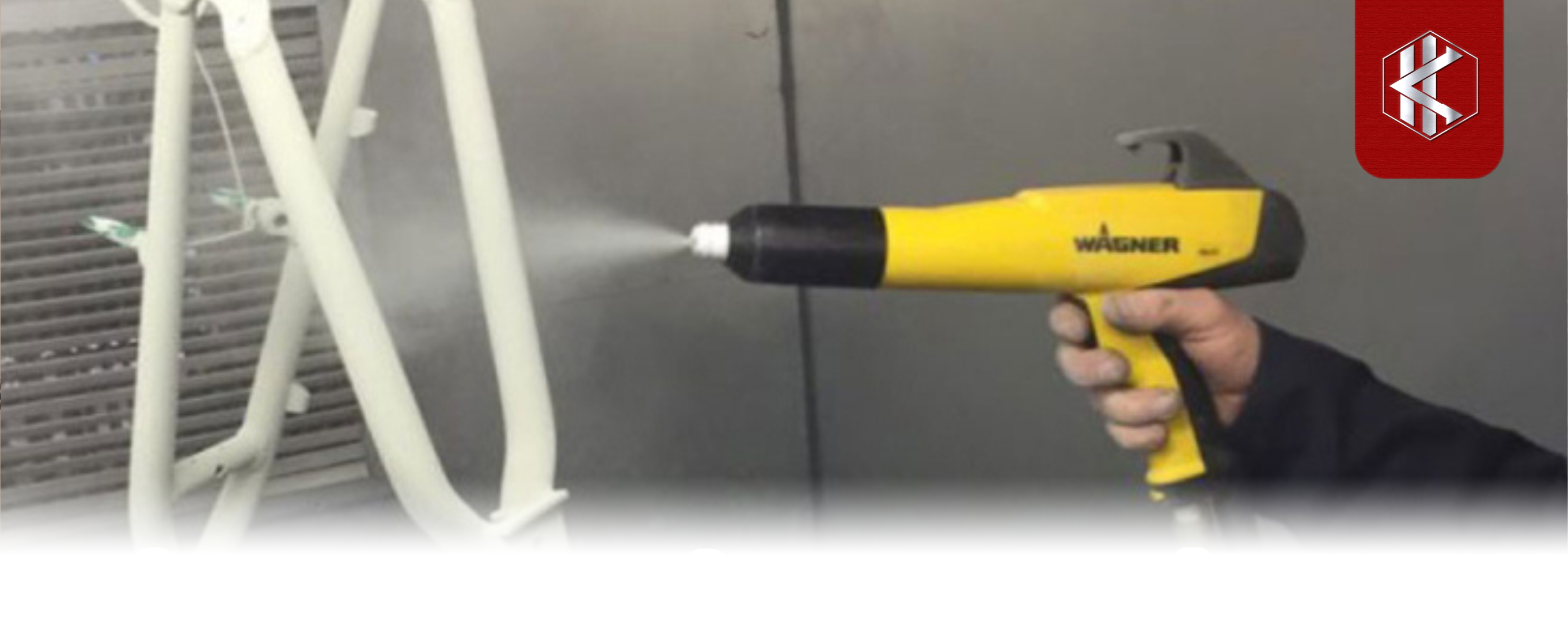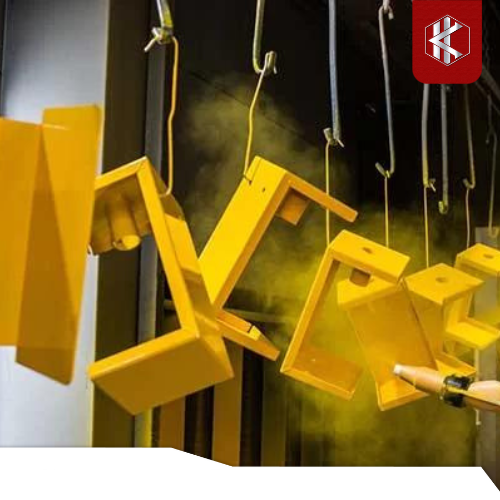Classification
There are two forms of electrostatic paint: dry and wet. Dry electrostatic paint (powder coating) is a widely used painting technology because it has many advantages over wet electrostatic paint (using solvents) and traditional painting methods.
Painting process
For any electrostatic painting system, from manual to fully automatic, it must go through the following four processes:
Step 1. Surface treatment
The purpose of surface treatment is to help the product surface meet the following criteria:
- Clean oil and grease (generated during machining and casting)
- Clean rust, dirt, impurities… (usually generated during storage and transportation)
- Clean the old paint layer for repainting
- Prevent rust from reoccurring while waiting for painting
- Create a good adhesion layer for the paint, increasing the resistance to bending and impact.
Chemical and mechanical (sandblasting) methods can be used to perform this process. The choice of method depends on the size, material properties, type of contaminants to be removed, and surface to be treated.
Different products may require different surface treatment methods to save cost, protect the environment, and maintain health. However, for automatic and semi-automatic painting systems, chemical surface treatment is often used.
Step 2: Drying After surface treatment, the product may still be wet and must be dried to ensure the paint layer quality. This can be done by:
- exposing to sunlight
- using a fan to blow air
- drying in an oven (manual or automatic)
Step 2. Surface Drying
After surface treatment, the product may still be wet and must be dried to ensure the paint layer quality. This can be done by:
- exposing to sunlight
- using a fan to blow air
- drying in an oven (manual or automatic)
Step 3. Powder Coating
Purpose of powder coating:
- To create a high-adhesion powder layer
- To evenly coat all surface crevices of the product
Execution:
An electrostatic spray gun applies positive electrical charge to the powder coating, which is then sprayed onto the negatively charged product surface. The opposing electrical charges cause the powder to strongly adhere to the product.
To carry out this process, we need:
- A specialized electrostatic spray gun for powder coating
- A spray booth to ensure proper coating standards, prevent powder from spreading into the environment, and make it easier to recycle excess powder. There are two types of spray booths:
- Single booth: objects are hung in the booth and coated with one spray gun
- Double or symmetrical booth: products move on a conveyor belt, coated by two spray guns with a powder recovery system.
Step 4. Drying the Paint
After the paint powder is sprayed, the product is taken for drying in the paint dryer.
The paint powder will melt at around 150°C and is kept at 200°C for a minimum of 10-15 minutes. The exact temperature and time depend on the properties of the material and the requirements of the paint powder manufacturer.
The aim of this step is to:
- Form a paint layer with high durability and adhesion
- Achieve the desired color and surface effect as specified by the paint powder manufacturer
Currently, there are 3 main production lines that manufacturing plants use for electrostatic or manual application, including automatic electrostatic, automatic spray and manual. Among these, the automatic electrostatic spray system is the most popular.






